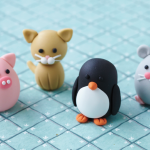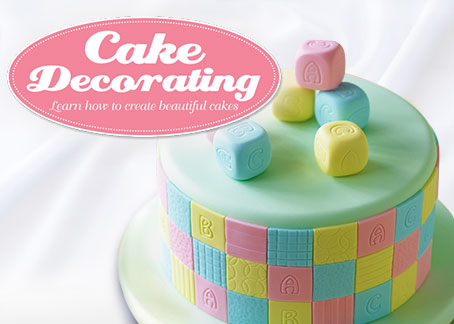These kitchen essentials are among the most useful tools in a cake decorator’s drawer and you can never have too many of them. Find out here which ones are best for you.
Cookie cutters are a brilliant tool – they not only lend a professional
finish to your project in an instant, but they also come in so many shapes that you can find one for almost any occasion or event. From wedding dresses and stiletto shoes to wintry snowflakes and animals, there’s probably a cookie cutter out there to suit your needs. Use them to help you create the perfect blank canvas for your designs. Find out more about cookie cutter types below!
Expert Tip
You probably have many items in your kitchen that can double as cutters, but make sure you give them a thorough clean before use. Why not try plastic jar lids, drinking glasses, bowls or ramekins to make different-sized circles?
Bright Idea
Don’t stop at using cookie cutters for cookie dough. You can use them to cut out shapes in sugarpaste, to make cute sandwiches for children’s parties, and to transform a larger sponge cake into several small ones. You can even use them to cut out jelly and soft fruit, like melon.
Types of Cookie Cutters
T his handy guide will help you understand the pros and cons of the many different types of cookie cutters that are on the market and which ones work best for you.
Metal Cutters
These are the most widely available type of cutter. They are most commonly made from food-grade aluminium, though you can also find them in copper or stainless steel. Resin-coated metal cutters look good and hold their shape well. Metal cutters come in an amazing variety of shapes and sizes, and the smaller ones can be used to make sugarpaste decorations.
Pros: Lots of variety, easy to use and they give a good, clean dough shape.
Cons: Thin uncoated cutters can bend easily and prevent you from getting uniform dough shapes.
Plastic Cutters
Though most plastic cutters are brightly coloured and for kids, many professional sugarpaste cutters come in plastic and are used for cutting out small decorations, such as specific types of leaves and flower petals. Generally, the thinner the plastic, the cleaner the cut.
Pros: Standard plastic cutters are safe and easy to use with kids, but won’t always give a pro finish. Specialist cutters are great for detailed cake decorations.
Cons: Pricey. Specialist cutters can cost up to £15.
Plunger Cutters
These can be made from plastic or metal and have a normal cutter shape at one end with a plunger handle. They’re used to cut out sugarpaste rather than cookie dough. Place the cutter over the sugarpaste and plunge the handle down. Plunger cutters often have details on them, such as leaf veins, which imprint the sugarpaste with an embossed design.
Pros: An easy way to add detailed decorations, especially if you’re a beginner.
Cons: Expensive compared to standard metal cutters; more prone to breaking due to small parts.
Embossing Cutters
Also known as 3D cutters, these plastic cutters have a plastic or silicone top. When you press the cutter into the dough, the top of the cutter leaves an impression. After baking, you can then use the embossed details as a guide for your icing. Smaller versions are available for cutting out sugarpaste decorations.
Pros: A fun way to get a professional finish; helpful to have lines to follow when icing.
Cons: Only a small variety of designs available.




